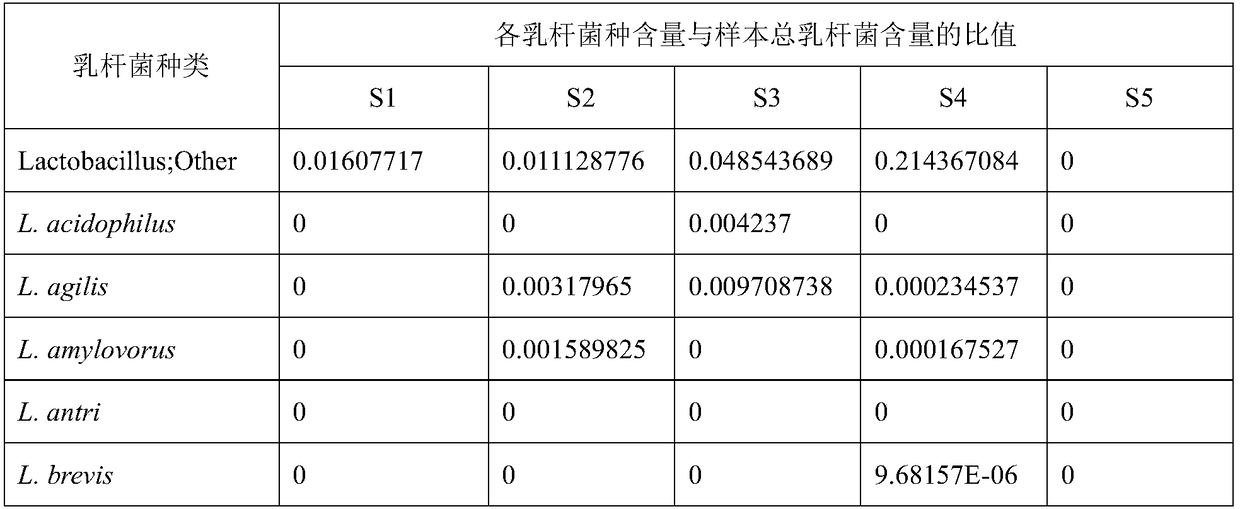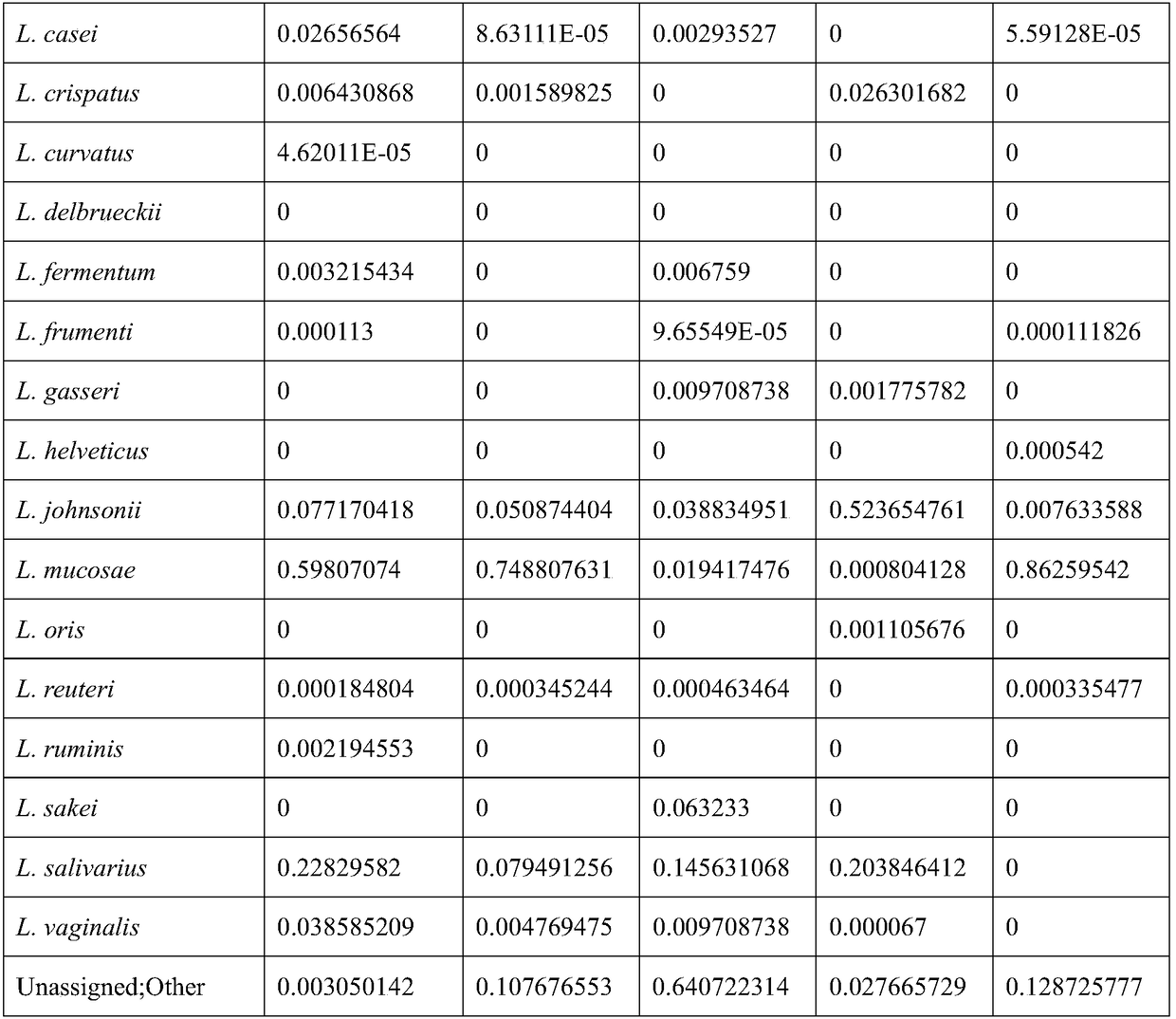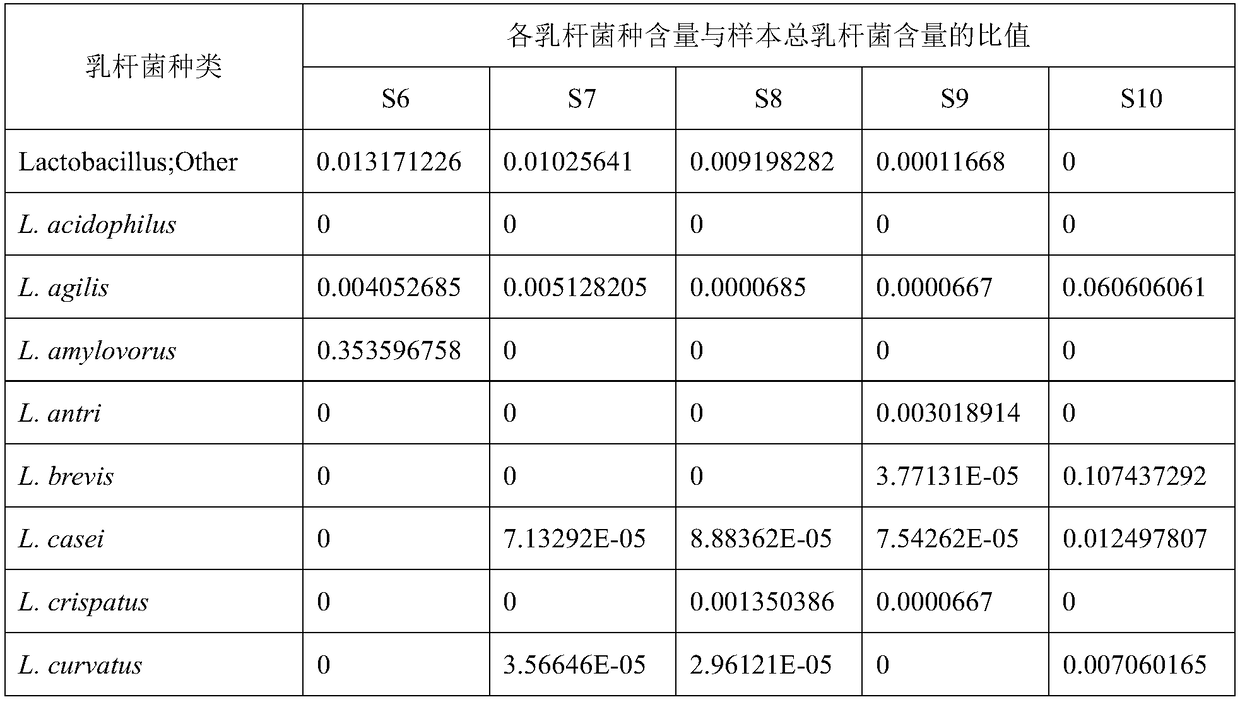Culture medium for separating and screening lactobacillus fermentum in human intestinal canals and application thereof
A medium and yeast powder technology, applied in the field of microorganisms, can solve the problems of low abundance, inability to accurately reach the level of strains, and no separation and screening, etc., to achieve the effect of improving efficiency
- Summary
- Abstract
- Description
- Claims
- Application Information
AI Technical Summary
Problems solved by technology
Method used
Image
Examples
Embodiment 1
[0029] Example 1: Exploring the composition of Lactobacillus in human intestinal flora based on Lactobacillus metagenomics
[0030] Human intestinal flora Lactobacillus metagenomic sequencing technology process:
[0031] (1) Take out samples of intestinal contents from 10 people in Nantong area from -80°C freezer, and after thawing, take out 0.2g samples of intestinal contents with a pipette tip for DNA extraction;
[0032] (2) Using the Feces DNA Kit (FastDNA Spin Kit For Feces, MP) to isolate and extract genomic DNA from the 10 intestinal contents described in (1);
[0033] (3) Lactobacillus groel gene amplification:
[0034] (I) Take 1uL of genomic DNA described in step (2) as a PCR template.
[0035] (II) The PCR primers used were Lactobacillus groel gene-specific amplification primers: 308F-TGAAGAAYGTNRYNGCYGG, 806R-AANGTNCCVCGVATCTTGT, and the length of the amplified fragment was 499bp.
[0036] (Ⅲ) PCR reaction system: 25uL Premix Taq (TaKaRa Taq Version 2.0plus dye,...
Embodiment 2
[0056] Example 2: Application of bacterial species screening of intestinal content samples on Lactobacillus basal medium LAMVAB
[0057] The formula of LAMVAB medium includes the following components (calculated in 1 L): peptone 10g, beef extract 10g, yeast powder 5g, dipotassium hydrogen phosphate 2.6g, sodium acetate 2g, diammonium citrate 2g, magnesium sulfate heptahydrate 0.5, a Manganese sulfate water 0.25, arabinose 20g, vancomycin 20×10 -3 g, L-cysteine 0.5g, bromocresol green 0.05g, Tween 80 1g, water 1000mL.
[0058] The preparation steps of the above-mentioned culture medium are as follows:
[0059] (1) Weigh 10g of peptone, 10g of beef extract, 5g of yeast powder, 2.6g of dipotassium hydrogen phosphate, 2g of sodium acetate, 2g of diammonium hydrogen citrate, 0.5g of magnesium sulfate heptahydrate, 0.25g of manganese sulfate monohydrate, and 20g of glucose , put 0.5g of L-cysteine and 20g of agar into a container, add distilled water to make up to 969mL, adjus...
Embodiment 3
[0074] Embodiment 3: the carbon source selection and optimization of culture medium
[0075] As described in Examples 1-2, there are about 25 types of lactobacilli commonly found in the human intestinal tract and lactic acid bacteria that can grow on the existing lactobacillus-specific medium LAMVAB. For these 25 species of bacteria, we first explored their utilization of different carbon sources. The experimental results are as follows:
[0076] Table 3 Utilization of different sugars by 25 common lactic acid bacteria in the human intestinal tract
[0077]
[0078]
[0079] Note: "+" means available; "-" means not available; " / " means unknown.
[0080] According to the utilization of different sugars by various bacteria in the human intestinal tract, we chose arabinose as the carbon source of the selection medium. In addition to Lactobacillus fermentum that can utilize arabinose, there are 11 strains that can also utilize arabinose, namely Lactobacillus fermentum, La...
PUM
 Login to View More
Login to View More Abstract
Description
Claims
Application Information
 Login to View More
Login to View More - Generate Ideas
- Intellectual Property
- Life Sciences
- Materials
- Tech Scout
- Unparalleled Data Quality
- Higher Quality Content
- 60% Fewer Hallucinations
Browse by: Latest US Patents, China's latest patents, Technical Efficacy Thesaurus, Application Domain, Technology Topic, Popular Technical Reports.
© 2025 PatSnap. All rights reserved.Legal|Privacy policy|Modern Slavery Act Transparency Statement|Sitemap|About US| Contact US: help@patsnap.com



